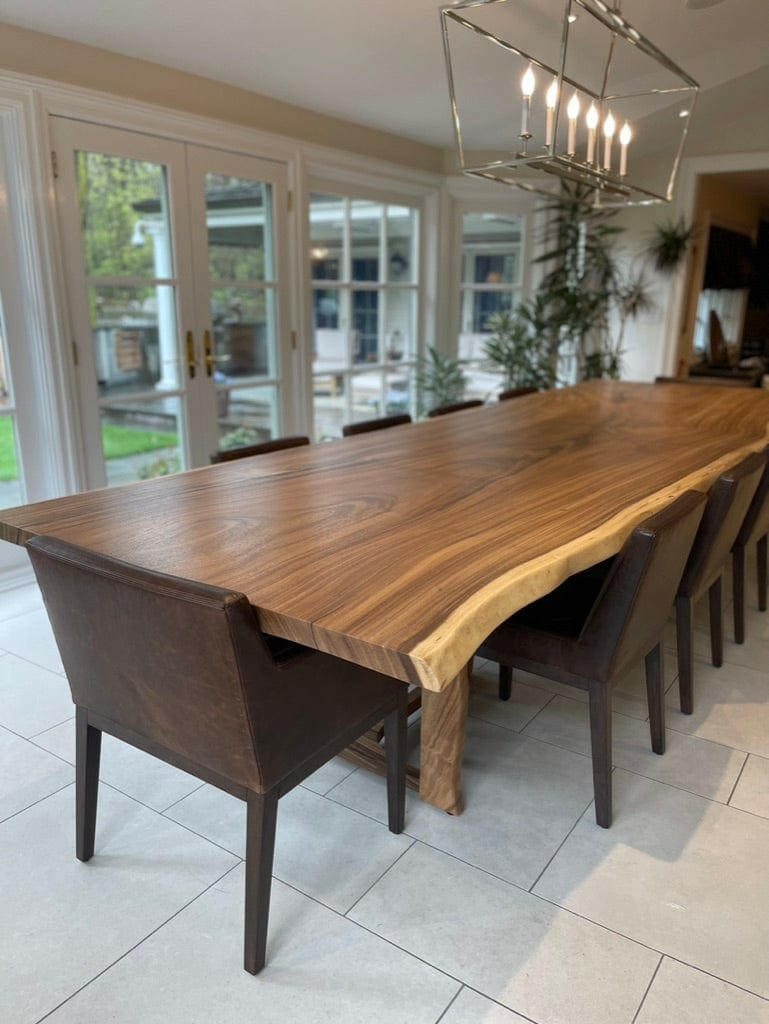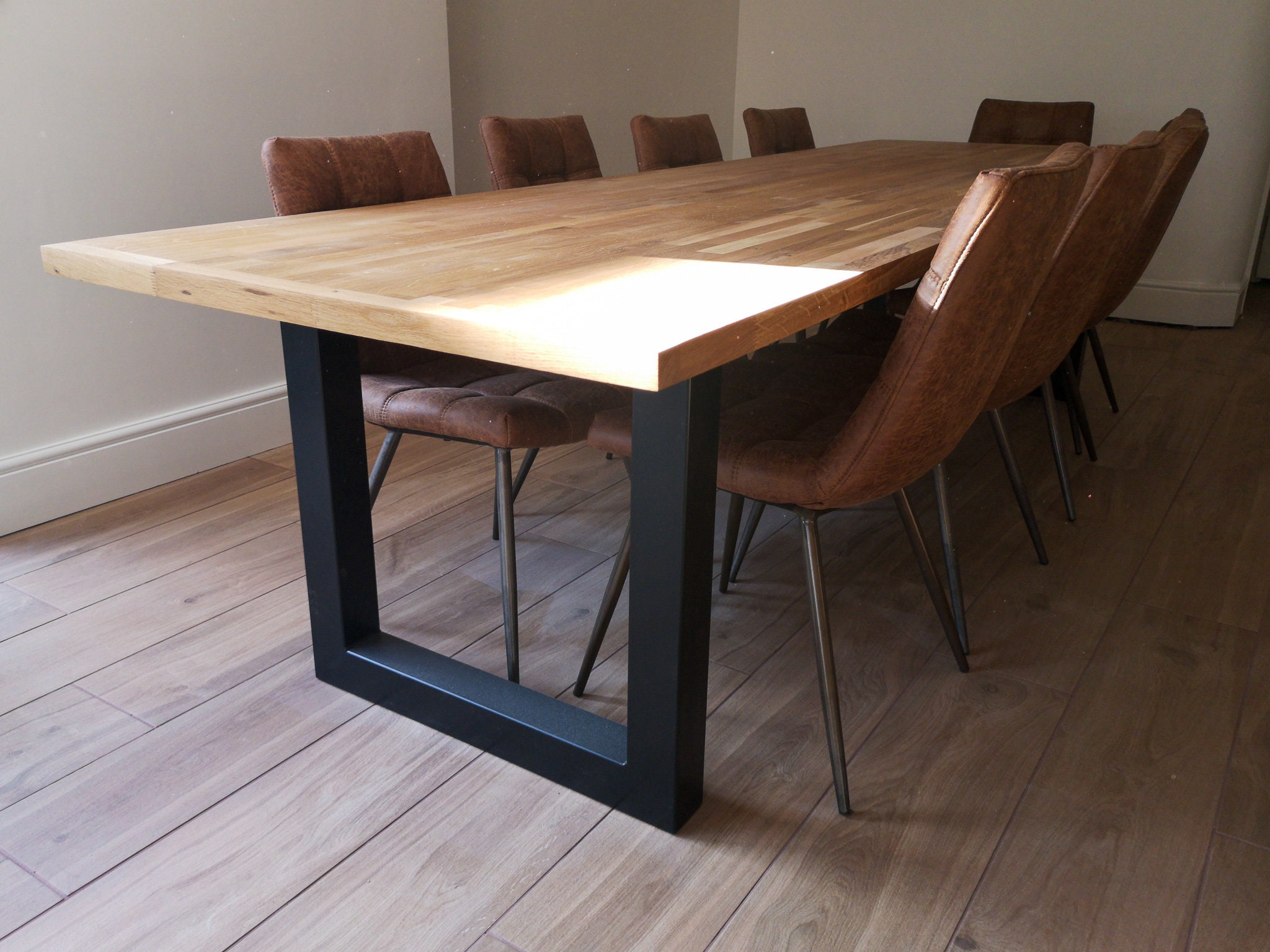Exploring Various Designs for Dining Room Table Legs to Match Your Aesthetic
Exploring Various Designs for Dining Room Table Legs to Match Your Aesthetic
Blog Article
Table Legs: Exactly How to Select the most effective Styles for Your Room
Choosing the right table legs is critical for both aesthetic and useful harmony in your dining space. Whether your room boasts a smooth, modern ambiance or leans towards an extra standard ambiance, the design of the legs can significantly influence the overall appearance. Tapered legs show modern beauty, while turned legs offer a nod to timeless beauty. Past style, the material-- be it warm timber or sleek steel-- plays a critical duty in establishing the tone. Yet just how do you ensure these elements complement your existing decor while offering the essential stability? The solution depends on a well balanced approach.
Analyzing Your Dining-room Style
Just how do you figure out the ideal dining table legs for your area? The solution begins with a thorough analysis of your eating room style. A cohesive layout guarantees that your table legs improve the total visual rather than clash with existing elements.
An eating area with streamlined, modern chairs and metal accents might profit from easy, structured table legs. Conversely, an area filled with classic pieces and rich materials may call for elaborate, carved legs.
Huge, open dining spaces can accommodate much heavier, extra considerable legs, whereas smaller rooms require even more delicate, unobtrusive layouts. By very carefully reviewing these variables, you can select eating table legs that harmoniously blend with your dining space's style.
Popular Leg Styles Described

One prevalent design is the tapered leg, renowned for its smooth, modern look. This leg narrows from top to base, providing a minimal appeal suitable for contemporary and Scandinavian interiors. Next off, the turned leg features complex spindle-like styles, commonly discovered in conventional and farmhouse setups. These legs include a touch of workmanship and sophistication.
Cabriole legs, with their distinct contours, are associated with French Provincial and Queen Anne furniture. Their stylish, streaming lines bring a feeling of class and historic beauty (dining room table legs). For those favoring a robust and simple style, square legs offer tough support and a clean, geometric appearance, suitable for commercial or minimal spaces
Last but not least, barrette legs offer a retro, mid-century modern vibe. Made from metal, these legs are both light-weight and solid, including a special aesthetic contrast to wood table tops. Understanding these styles will direct you in selecting eating table legs that boost your space's aesthetic and functionality.
Product Factors To Consider

Metal legs, typically made from stainless steel, iron, or light weight aluminum, supply a contemporary and industrial appearance while making sure robust assistance. They are generally more resistant to put on and tear, making them a resilient choice.

Other products like bamboo or rattan offer eco-friendly choices, bringing an all-natural and unwinded ambiance to the dining area. Each material has its advantages and disadvantages, and the most effective option will depend on your particular moved here needs and preferences.
Harmonizing Aesthetics and Capability
Achieving the excellent balance in between aesthetics and performance is important when selecting table legs. While the aesthetic appeal of table legs can dramatically boost the general ambiance of an eating area, their functional aspects can not be neglected. The style of the legs must balance with the area's design, yet they need to also offer adequate support and stability for the table.
Think about the architectural style of your area. Smooth, modern interiors might benefit from minimal, metal legs that provide a clean and inconspicuous appearance. On the various other hand, typical settings frequently match transformed or carved wood legs that add a touch of sophistication and refinement.
Performance includes the security and longevity of the legs. As an example, trestle legs, recognized for their effectiveness, can supply strong assistance for larger tables, making them suitable for family members or frequent entertainers. dining room table legs. Alternatively, pedestal legs can supply more legroom and adaptability, enabling for far better seats arrangements
Additionally, the height redirected here and positioning of the legs are essential for comfortable eating. Legs positioned also far inward may restrain seating, while those as well near to the edge can restrict activity. Thus, thoughtful consideration of both visual and functional aspects is extremely important for an optimal dining experience.
Modification and Do It Yourself Options
Personalization opens up a world of possibilities for producing dining table legs that are distinctively customized to your taste and needs. Details style aspects, such as turned legs, tapered forms, or detailed carvings, can be included to mirror your style.
For those likely in the find out here direction of do-it-yourself (DIY) jobs, creating personalized eating table legs supplies both a rewarding experience and the possibility to accomplish a bespoke aesthetic. Do it yourself fanatics can source basic materials and utilize woodworking or metalworking tools to craft legs that meet accurate specs. Furthermore, many on-line tutorials and workshops provide guidance, making the process more available for newbies.
Inevitably, whether choosing specialist customization or embarking on a DIY venture, the ability to tailor dining table legs makes sure that the last item balances with your indoor style vision, boosting both functionality and visual appeal.
Verdict
Choosing the ideal dining table legs calls for cautious factor to consider of the general style of the dining room, consisting of existing building attributes and furnishings. Ultimately, the chosen table legs ought to enhance the design, supplying both visual allure and practical assistance.
Report this page